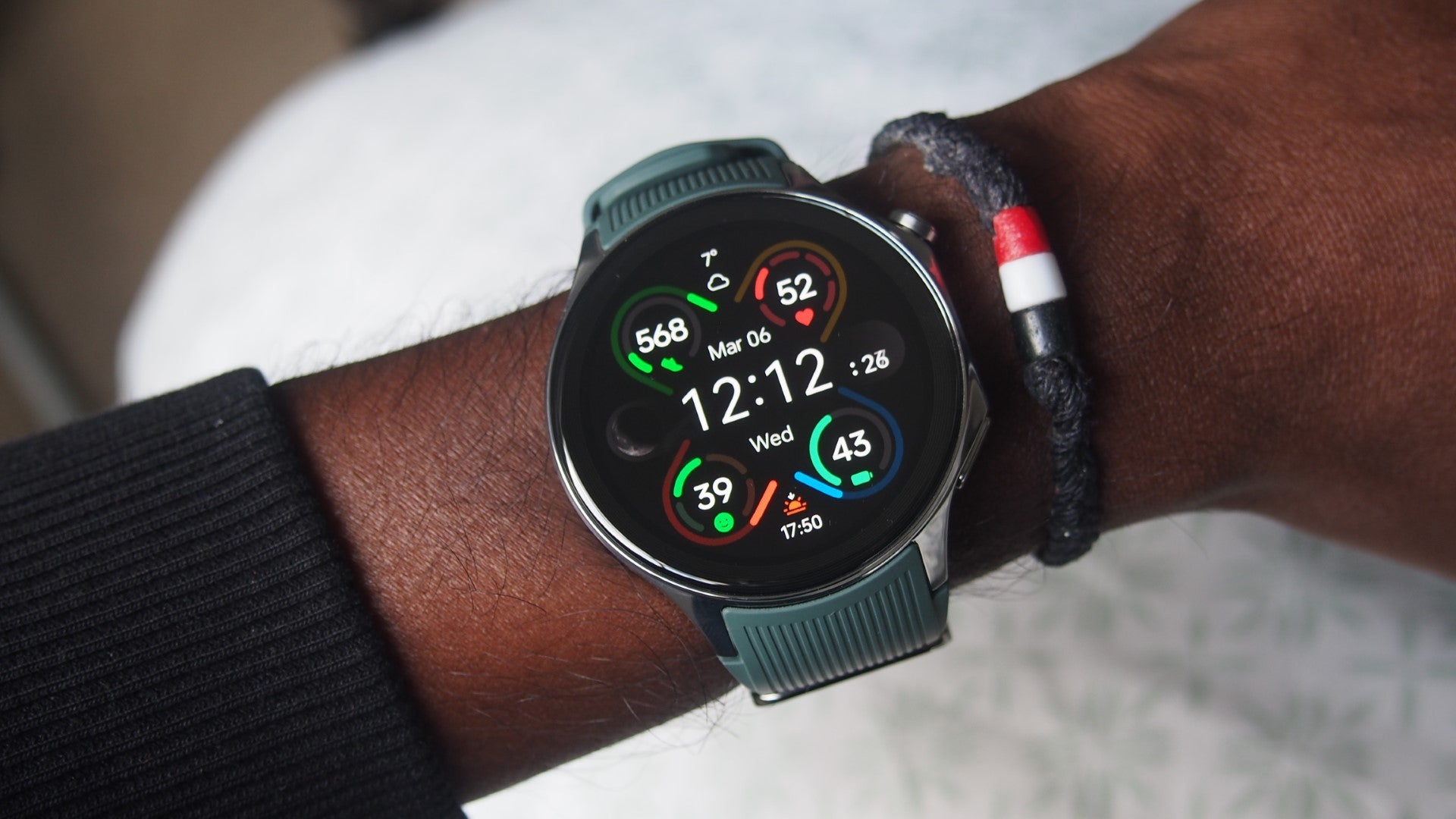Huawei Watch D Review
A blood pressure sensor on your wrist
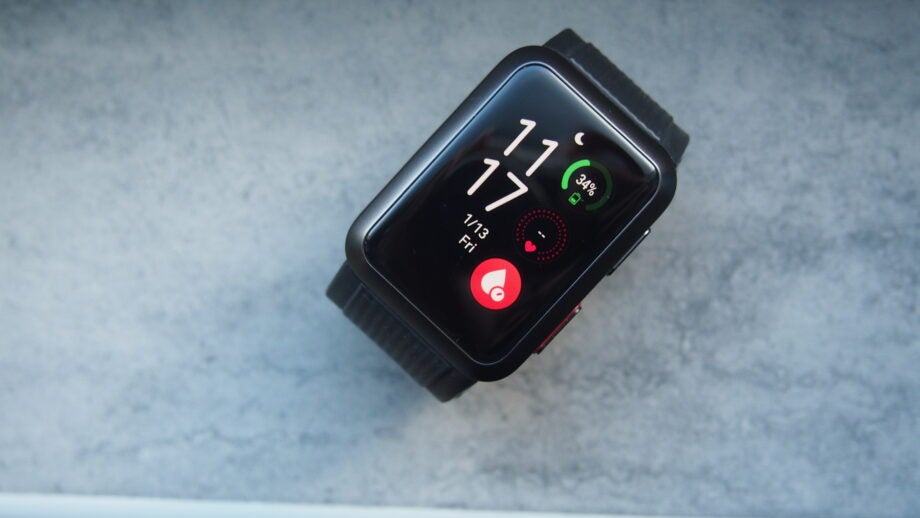

Verdict
The Huawei Watch D is a good showcase for bringing cuff-style blood pressure measurements to the wrist. If you like the idea of a more convenient way to track blood pressure, then it will appeal. If you’re hoping it will also match the features and smarts of Huawei’s other smartwatches then that’s sadly not the case.
Pros
- Easy to take blood pressure readings
- Accurate ECG readings
- Week-long battery life
Cons
- HarmonyOS not at its best
- Not the sleekest design
Availability
- UKRRP: £349
Key Features
- Blood pressure monitoring:Get your blood pressure reading from your wrist
- ECG measurements:Look out for signs of atrial fibrilation
- 7-day battery life:Keeps on trucking for up to a week
Introduction
The Huawei Watch D is a smartwatch breaking new ground in the way you can monitor one particular health metric from your wrist.
While this is a watch that can keep tabs on your heart rate, skin temperature and SpO2 levels, it also has the ability to take blood pressure measurements in a similar fashion to traditional cuff-style monitors without calibration.
It’s also a watch that runs on Huawei’s HarmonyOS operating system, offering the kind of smarts that make it useful outside of just monitoring your health. The key story here though is that Huawei is offering the ability to measure a piece of health data that few smartwatches are currently capable of.
Design and screen
- 51mm case
- AMOLED touchscreen display
- Two strap sizes
- IP68 water resistance level
The Watch D is definitely a departure from the look adopted by Huawei’s other smartwatches. If you were expecting something as similarly sleek as the Huawei Watch GT 3 then that’s not the case.
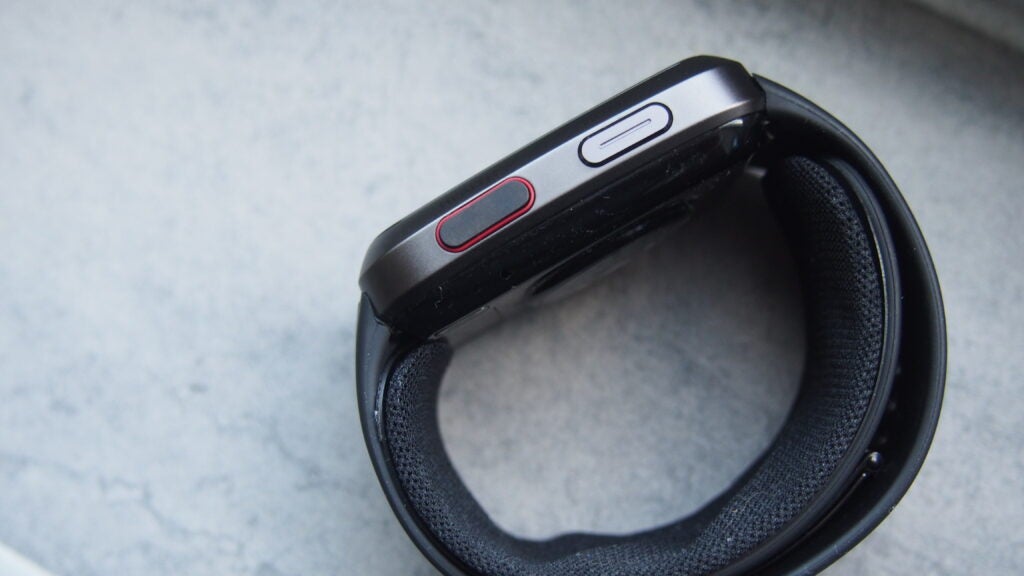
It’s a more blocky, rectangular affair with a 51mm aluminium case body, which comes in just a single graphite black colour. At 13.6mm thick, it’s noticeably chunkier than the 42mm and 46mm versions of the Watch GT 3 and it does live more prominently on your wrist.
Up front is a 1.64-inch, 456 x 280 resolution AMOLED screen display, which is an ideal size and resolution in terms of showing off your stats and absorbing them on the move, but it certainly didn’t feel as buttery smooth to interact with compared to Huawei’s other smartwatches. Still, if you want that screen on 24/7 then you do have that option here.
Alongside swiping and tapping on the screen, there are two physical buttons on the right side of the case with the bottom one assigned as a Health button. This gives you a shortcut into the blood pressure monitoring screen and it’s also the button that hosts the watch’s ECG measurement powers.
Keeping that case around your wrist is a pretty wide fitting strap, which comes in two sizes. This is important because these straps include the inflating airbag that’s used to take blood pressure measurements. You need to make sure you have the right sized strap on to get the optimal setup and there’s also a measurement tool and explainer available to make sure you do get the right one on.
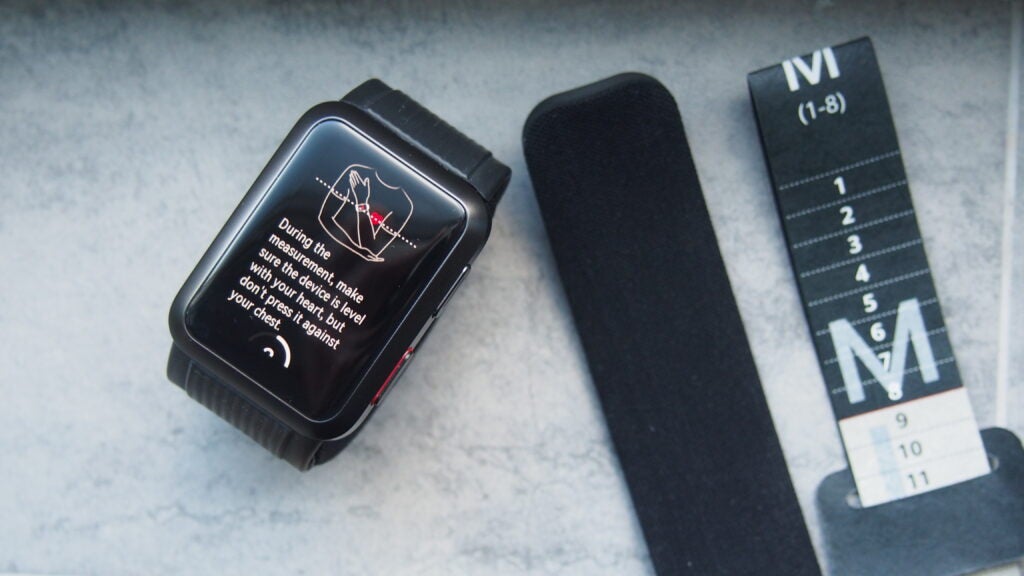
It looks like a fiddly process, but once you’ve established the strap size you need, it’s a pretty straightforward case of leaving the existing strap on, simply clapping on the new one and making sure the airbag element isn’t covered up and sits comfortably against your wrist.
A note on waterproofing here. Unlike Huawei’s other smartwatches, the Watch D’s abilities to fend off water have been downgraded to an IP68 rating, which means it’s not suitable for swimming or jumping into a hot shower whilst wearing it.
Health tracking
- Take blood pressure readings
- ECG measurements
- SpO2 and temperature tracking
The Huawei Watch D can do a lot of what Huawei Watch GT series smartwatches can do, but its standout feature is the ability to let you take blood pressure readings, which are plotted inside of the Huawei Health app.
To take a reading, it’s a simple case of tapping the blood pressure widget on screen or using the physical Health button, and you’ll be instructed on what you need to do to take a reliable reading. As long as you pay attention to those instructions, measurements will be successful. If you move or speak, then it will tell you that it’s unable to take a reading. I’ve found this process, on the whole, to be very reliable and it’s only really struggled to take a reading when I’ve moved about or had my wrist too close to my body.
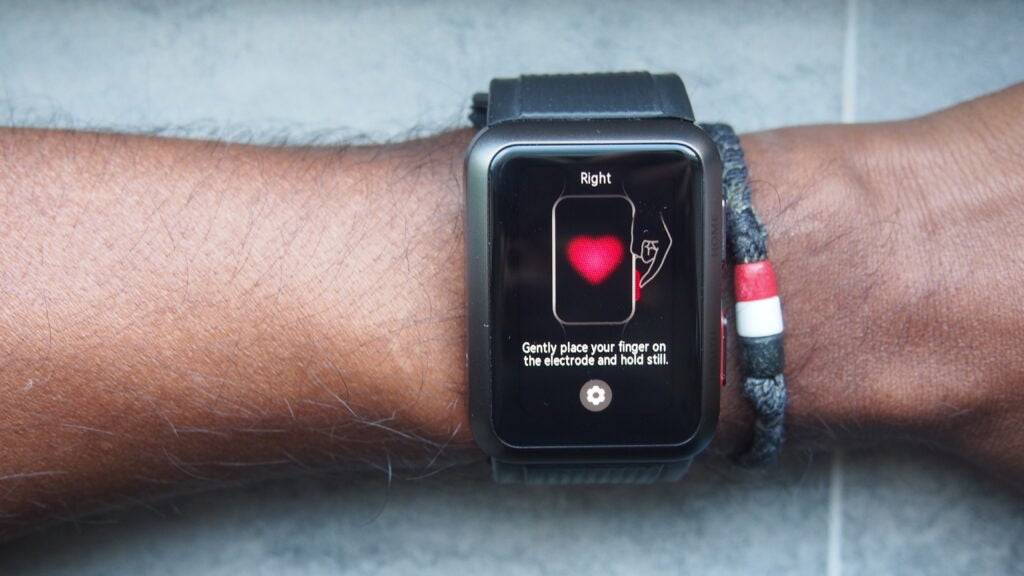
During that approximately 30-second reading, you’ll see a gauge appear on screen and you’ll feel the strap gently expand and generate a very soft squeaking sound to indicate that it’s taking a measurement. Then it’ll provide you with your systolic, diastolic and pulse rate numbers. Accuracy-wise, Huawei says you can expect a margin of error of +3 mm Hg, which is the same story for other more traditional cuff-style monitors.
While readings against a blood pressure monitor didn’t always entirely match up, most were within that margin of error and suggested that blood pressure was normal with similar average systolic and diastolic numbers. On the watch, you can view previous measurement records and Huawei also indicates if anything interrupted a reading, whether there was movement or you didn’t hold the watch in the right position. In the Huawei Health app, you can see measurements plotted out neatly and there is an explainer of what is deemed normal or severe blood pressure levels, which is based on official health and medical guidelines.
Outside of blood pressure monitoring, Huawei does also include an ECG sensor which is activated when you place your finger on the electrodes built into the physical Health button. Like the blood pressure support, this is medically certified in Europe to detect atrial fibrillation and sinus rhythm. We matched it up to the heart rate readings from an Apple Watch Ultra and our blood pressure monitor, finding those readings to be all nicely in line with one another.
Huawei does also let you track things like stress, SpO2 levels, day-to-day heart rate using its optical-based TruSeen 5.0 sensor and can continuously monitor skin temperature changes, which proved insightful while testing during a bout of the flu and seeing that temperature just above normal. These features don’t carry the same regulatory approval as the blood pressure and ECG features, so they are there for guidance only.
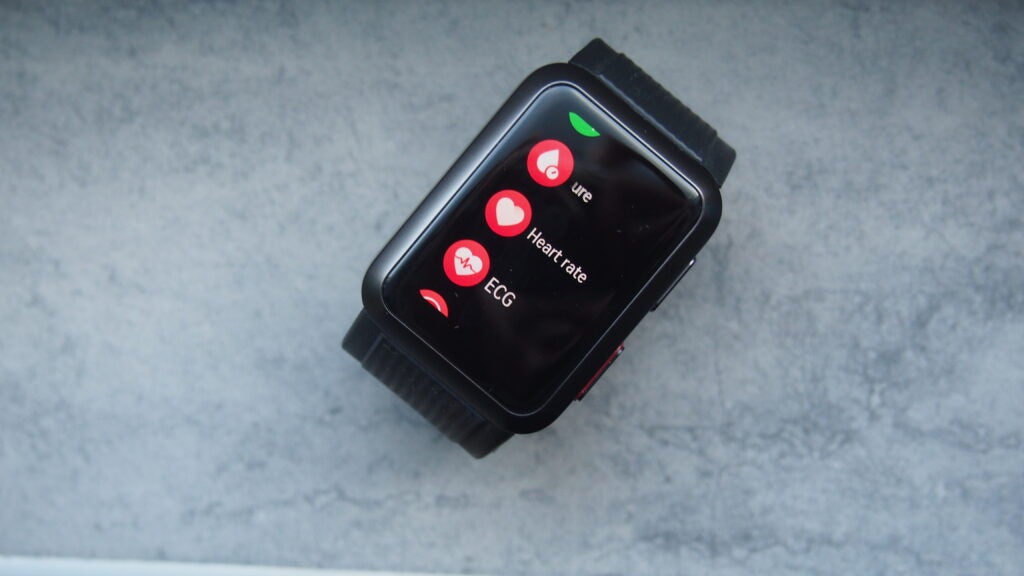
Fitness tracking and smartwatch features
- 70+ workout modes
- Healthy Living clover reminders
- Music controls and notifications
Huawei’s HarmonyOS is running the software show and its presentation on the Watch D is similar to what you’ll find on the company’s Watch GT wearables. The menus and the interface look the same and it’s an easy operating system to learn and understand.
Huawei doesn’t divulge what kind of processor or RAM is powering performance, but we’d say it’s not quite what you’ll find on its other watches. The Watch D’s performance is not a slow, laggy mess, but there’s a little lag that means swiping through screens isn’t as smooth and swift as we know it can be on other watches. It doesn’t ruin the experience in any way, but there is a slight performance drop here.
As a smartwatch, you’re not getting the full Huawei package either. You can view notifications, weather forecasts, change watch faces, set alarms and times, and there’s music playback controls here too. You don’t get a built-in music player, contactless payments, LTE, voice assistant or any sort of AppGallery app store access as far as we can see. What is here works perfectly fine, but if you were hoping for a rich Huawei smartwatch experience then you don’t get that with the Watch D.
It’s a similar story if you turn to it for sports tracking and activity tracking. It has the core features included on other Huawei watches, but you’ll have to live without a few things like advanced running metrics, pool swim tracking, the ability to upload routes for navigation and animated workouts.
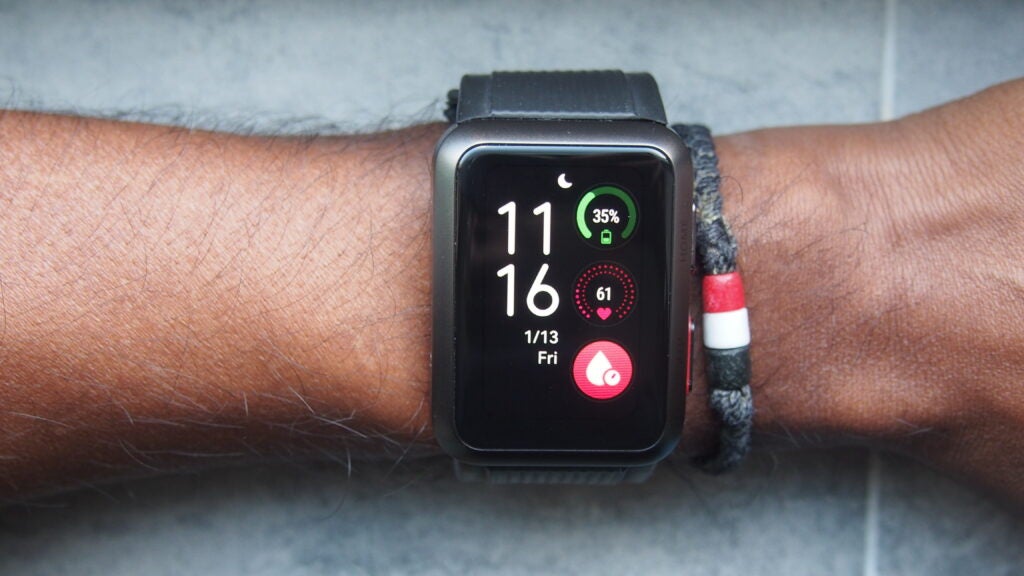
You do get 70+ workout modes and that includes running, cycling and some indoor workouts like rowing. Huawei does also include its useful running courses if you want to add structure to your running time and there are training insights like training load, VO2 Max and recovery suggestions. There’s enough here to offer a good sports tracking experience overall. The GPS performance in general was good against a dedicated Garmin sports watch and while the display is a bit on the bulky side, it was comfortable enough to exercise with.
Huawei does also let you track steps and sleep, and does so in a reliable fashion too. There’s those Healthy Living reminders that will buzz you in quite a regular fashion throughout the day to make sure you smile, drink or get a sweat on, though how effective they are at making sure you do those things are certainly up for debate.
Battery
- Up to 7-days of battery life
- No fast charging support
While Huawei is breaking new ground in terms of health monitoring, it isn’t doing the same for battery life, but it is still offering a very solid battery performance overall.
Huawei says you can expect up to 7 days of battery life from the Watch D and that’s exactly what we got from it (if you don’t have that screen set to always-on). That testing time included daily blood pressure measurements, indoor and outdoor sports tracking, viewing notifications and continuous heart rate, temperature and SpO2 monitoring. The daily drop-off was pretty consistent and there wasn’t any concerning drain overnight or during sports tracking.
Huawei’s largest model GT 3 smartwatch is capable of going for up to two weeks while the more fully fledged smartwatches the Huawei Watch 3 matches the Watch D’s 7-day battery, so it’s not a massive deviation from what else is available in the Huawei range and we were pretty happy with battery life on the whole.
Save money with Trusted Reviews vouchers
Fancy getting a major discount on some of the biggest Huawei products currently available? Then you’ll be pleased to know that our team has secured numerous vouchers and promo codes from Huawei, all in the name of saving you money.
Latest deals
Should you buy it?
You want a watch built around health tracking: With strong ECG and blood pressure features and performance, those are the key reasons to pick up the Huawei Watch D
You want the best-looking Huawei smartwatch: That blocky look of the Watch D means it’s far from an attractive watch to wear day-to-day.
Final Thoughts
The Huawei Watch D is an important watch because it’s arguably offering the best solution to bringing good blood pressure tracking to a wearable that doesn’t require regular calibration. Where things need to get better is in giving it a design and the level of smarts that better match Huawei’s other watches, especially given the price. If you like the idea of owning a Huawei watch that offers those useful blood pressure and ECG features, then you’ll like the Watch D. If you want those features in a design that rivals the best smartwatches out there, then it’s not quite there yet but it’s a good start.
How we test
We thoroughly test every fitness tracker we review. We use industry standard testing to compare features properly and we use the watch as our main device over the review period. We’ll always tell you what we find and we never, ever, accept money to review a product.
Worn as our main tracker during the testing period
Heart rate data compared against dedicated heart rate devices
FAQs
The Huawei Watch D cannot answer calls as it lacks a built-in speaker and microphone but can receive notifications about incoming calls.
The Huawei Watch D isn’t suitable for swimming. It carries an IP68 waterproof rating, which offers some dust and water resistance but isn’t suitable for being submerged in water.
Full specs
Sustainability
TrustedReviews’ holds the fact that global warming is not a myth as a core value and will continuously endeavor to help protect our planet from harm in its business practices.
As part of this mission, whenever we review a product we send the company a series of questions to help us gauge and make transparent the impact the device has on the environment.
We currently haven’t received answers to the questions on this product, but will update this page the moment we do. You can see a detailed breakdown of the questions we ask and why in our sustainability info page.




